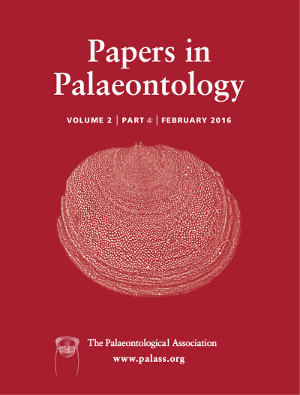Reg. Charity No. 1168330

A new cistecephalid dicynodont, Sauroscaptor tharavati gen. et sp. nov., is described from the upper Permian Kundaram Formation of India. This taxon is represented by specimens formerly referred to the African dicynodont genera Cistecephalus and Emydops. Sauroscaptor can be distinguished from other cistecephalids by the extremely posterior position of the pineal foramen (overhanging the edge of the occiput), bipartite nuchal crest, and relatively narrow skull roof. The recognition of Sauroscaptor as a distinct cistecephalid taxon adds to the increasing evidence for high levels of basinal endemism in this family. However, dicynodont biogeographical patterns are complex, and there is no simple relationship between inferred dispersal ability based on body size and levels of endemicity within clades.